Ants can be found almost everywhere in the world, but the type of ants will differ in each place.
When it comes to Nevada, there are many things to discuss.
Known as the Silver State, Nevada is famous for its glittering casinos, luxurious hotels, and vibrant nightlife. But there’s more to this state than just the bright lights of Las Vegas. Nevada is also home to vast desert landscapes, rugged mountains, and stunning lakes like Lake Tahoe and Pyramid Lake.
And if you’re a fan of outdoor adventure, there’s plenty to do here – from hiking and rock climbing to skiing and snowboarding. But if we’re talking about unique features, we can’t forget to mention the Area 51 military base, which has long been a topic of fascination and conspiracy theories.
So while Nevada might be most famous for its flashy casinos and over-the-top entertainment, there’s much to discover beyond the Strip.
While all of this is nice, we can’t forget the cool ants that are in Nevada. These ants listed below would be perfect to start your ant-keeping journey, as they’re well-adjusted to Nevada’s humidity, water, and temperature!
Types Of Ants In Nevada
Acrobat Ants, Argentine Ants, Bigheaded Ants, Black Carpenter Ants, Carpenter Ants, Fire Ants, Ghost Ants, Harvester Ants, Little Yellow Ants, Odorous House Ants, Pavement Ants, Pharaoh Ants, Small honey Ants
Argentine Ant
An ant that is dominant in northern Argentina, Bolivia, Uruguay, Paraguay, and southern Brazil is called the Argentine ant, known initially as Iridomyrmex humilis.
They have spread to many different regions that have a subtropical climate. The ants can fit through fractures and openings as tiny as 1 millimeter in diameter.
These ants range in length from 1.6 to 2.8 millimeters. The Queens are taller and longer than the worker ants, measuring about 4.2–6.4 millimeters in length.

These ants will establish colonies under the dirt, in crevices in concrete pillars, within boards or timbers, or even amongst the walls in human homes.
Due to their limited capacity to construct deeper homes, they typically build shallow nesting sites in natural settings, usually behind tiny stones or scattered fallen leaves.
Nevertheless, Argentine ants will quickly take up any area, eating and invading all the different types of insects within the same ecosystem.
Eastern Black Carpenter Ant
Black carpenter ants are known to leave pheromones (scent gland) traces as they seek food at considerable distances of upwards of 100 yards (91 meters) from their nest.
They must hunt this far away from their homes because so many ants can live in a single nest.
The worker’s loud crackling noise makes it possible to identify these huge nests even in the dark.
Although the black carpenters cannot cause extreme harm, the big workers may deliver a hurtful bite.
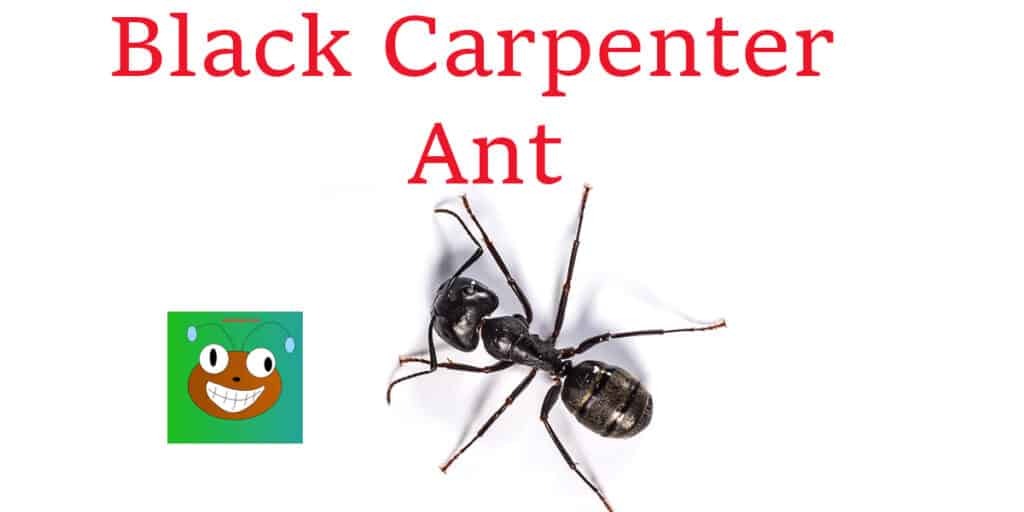
When biting, the black carpenter ant is known to spray formic acid, making the bite hurt just a bit more.
Aphids are cared for by worker carpenter ants, who raise them. In return, the aphids spit out honeydew that the black carpenter ant enjoys and brings back to the nest.
This isn’t all they eat; as foragers, they consume plant liquids and other bugs and insects.
Black Carpenter ants build their nests in tree stumps and other types of wood. While this does promote decomposition, which is advantageous for the environment, the overall structural damage that black carpenter ants cause is extensive.
These ants are known to build nests in homes and abandoned barns, creating havoc for home owners.
Carpenter Ant
Carpenter ants got their name because they dig wood to make their nests, creating neat tunnels within the wood.
These ants will only chew and burrow through the wood to build nests; Interestingly, they do not consume wood.
Depending on the species, Carpenter ants’ length ranges from 12 to 25 mm.

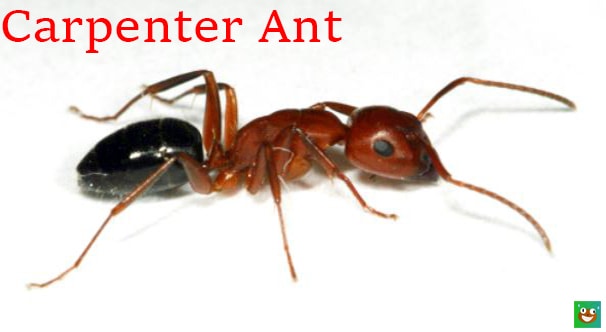
Carpenter ants that are black are frequent pests, but these insects can also be all-black, all-red, or all-brown.
When mature, the black western carpenter ants colony has ten to twenty thousand workers.
Incredibly, some big colonies have more than fifty thousand ants.
In most territories, there is only one active, wingless Queen. The colony must be older than two years before the production of swarmers takes place (potential new queens).
Instead, swarmers are produced the year before and kept in the nest during winter in preparation for the ensuing years’ dispersal.
In the east of the US, swarmers arrive from May through August, whereas in the west, they appear from February till June.
Red Imported Fire Ant
Some of the approximately 200 distinct insects in the genera are known as “fire ants.”
Due to their red color, they do not belong to the subspecies Solenopsis Richteri.
Many of the names possessed by each species of Solenopsis are commonly used interchangeably when referring to each other, such as the term “red ant.”
The three body parts of adult fire ants are the skull, the thoracic, and the abdomen, along with three sets of limbs and a group of antennas.
Luckily, this is the same as the anatomy of all other adult insects.
The red fire ant has a golden-brown skull with a dark metasoma (abdomen).
The ants vary in length from 2 – 6 mm and are two colored, black and red.
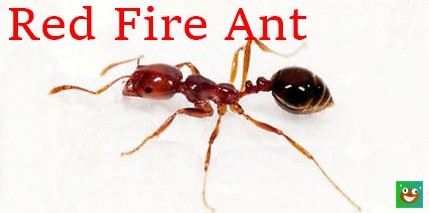
An easy way to identify a fire ant is by its dark abdomen and contrasting red thorax.
These ants are aggressive, eat anything in their path, and breed at an accelerated pace.
Fire ants can become worker ants in just 15 days. These ants are officially a pest in the United States, consuming over 300 million acres.
Ghost Ant
This ant looks like it should star in a Halloween movie.
With a dark shade on its head, pale and translucent legs, and Gaster, this Ant seems like it could be a ghost.
This ant is about 1/16th inch long but sometimes looks even smaller.
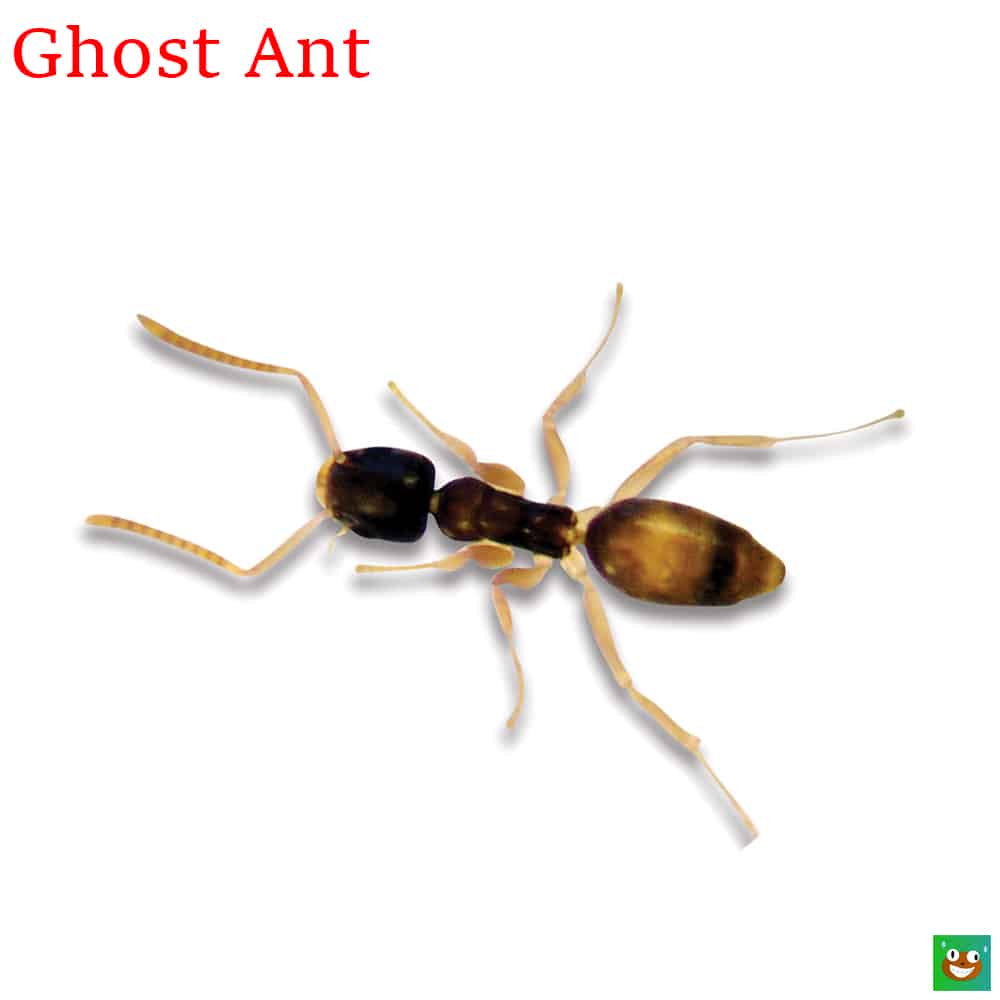
The unique thing about this ant is since its legs are translucent, many people underestimate their size
…or don’t see this ant crawling around at all.
These ants love sweets, so make sure you don’t drop any cookies during your midnight snack run.
An interesting fact about Ghost Ants is that they can actually have multiple Queens in one nest.
This is unique, as most ant species have one Queen Ant.
Groove-Headed Fierce Ant
The genus gets split into multiple species groupings classified by different traits.
Most general workers have antennas of 11 or 12 parts, or 3-segmented spurs on the ends, a textured clypeus, an accessory stinger, a jaw with three or four teeth, and an appendages spear.
Typically, these ants are 1/8 to 1/4 of an inch in length. A species of pavement endemics from Europe was presumably brought to America in the eighteenth century.
Most of these species are in subtropical, tropical, or oriental areas.
In Japan, ten species are currently known. Most species are known to exist and breed in soil, decomposing wood, or fallen leaves.
Some individuals lived in termite colonies or trees. The nests are often erratic, sandy craters with shaky construction.
However, they occasionally build their nests on decaying stumps.
This ant is infamous for its fury – when workers believe they are in trouble, they will ruthlessly attack.
Hairless Rover Ant
The opportunistic nesting Brachymyrmex depilis species create tunnels under fallen logs, at the foot of growing plants, beneath stones, in the trash, along stems, and in the ground.
These ants quickly desiccate due to their tiny size and fragile structure, which causes colonies to congregate in locations with humid nesting chambers.

The hairless rover ant can be differentiated from other Northern America Brachymyrmex by color, ranging from gray to dark brown. The yellow ants are only one or two millimeters in length.
A hypothesized queen involves certain species; workers can be monomorphic and dimorphic.
The ants can be found in many settings, including open woodland, deep damp forest, meadows, and pastures.
The nesting chambers of a settlement of Brachymyrmex depilis can be discovered in the dirt behind rocks or decaying wood.
Their lives are spent nearly entirely underground. In underground tunnels, workers manage root aphids or coccids in addition to being common scavengers.
Little Yellow Ant
A subspecies of Plagiolepis is the tiny yellow ant or Plagiolepis alluaudi.
It is set apart from most other little yellow kinds of ants and is acknowledged as a common exotic species.
It’s also termed Alluauds little yellow ant in honor of Charles A. Alluaud.
A typical Plagiolepis alluaudi measures 1/16 inches in length, has 11 antennal sections, appears yellow, and has a spherical head.
The oblong-headed P. exigua is also the sole yellow ant within the genus Plagiolepis.
It is currently unknown if Plagiolepis alluaudi bites or stings people. However, this ant species can spread illness and may pose a hazard to commercial crops such as oranges.
Developed colonies are challenging to exterminate.
However, setting out ant baits may eliminate some in an extensive settlement at once.
In addition, these ants have been seen devouring sweet items within human dwellings.
Odorous House Ant
The worker-odorous house ants are around 3mm long and black to dark brown.
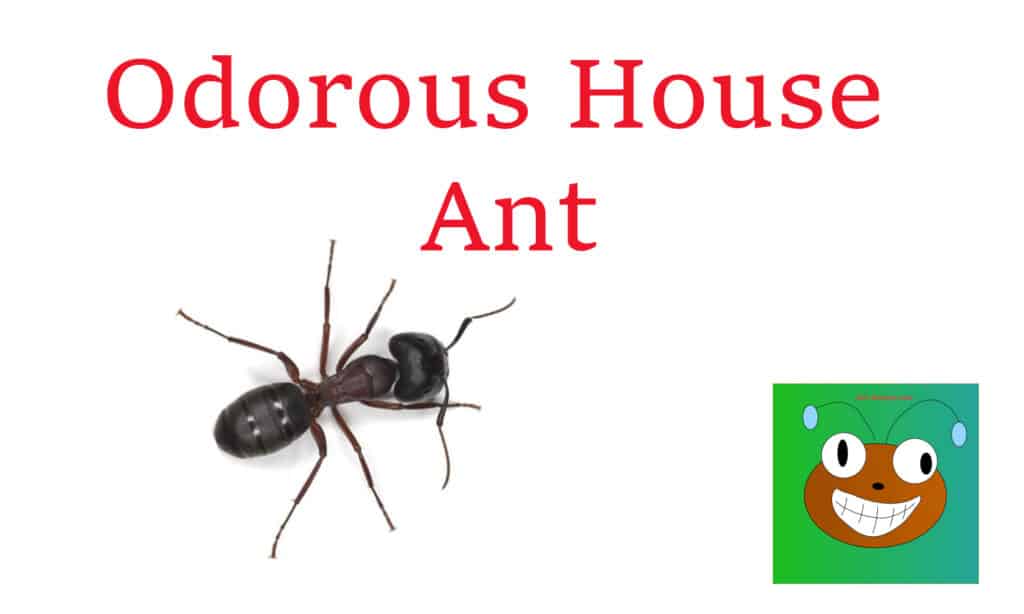
Additionally, they have antennae that resemble a long stick.
Crushed, odorous house ants produce a pungent, rotten coconut-like stench that gives these insects their name.
Odorous house ants build their nests indoors next to moist areas, such as heaters, heater cavities along hot water pipes, under leaking fixtures, and on termite-damaged wood.
Outside, odorous ants are frequently discovered on bare soil or beneath firewood piles. Odorous house ants enjoy eating sweets and particularly enjoy consuming honeydew.
Occasionally, they eat other things, such as pet food or insects. Approximately tri-monthly, they often relocate their nests because of rain.
They create new colonies following mating flights at the end of spring and summer.
Colonies are also split by the budding process, in which a queen leaves her nest with some workers to start a new colony elsewhere.
Pavement Ant
The head and thorax of pavement ants are marked with grooves, the thorax being the only part of the body-bearing spines.
Their size is usually between 2.5 and 3 mm in length.
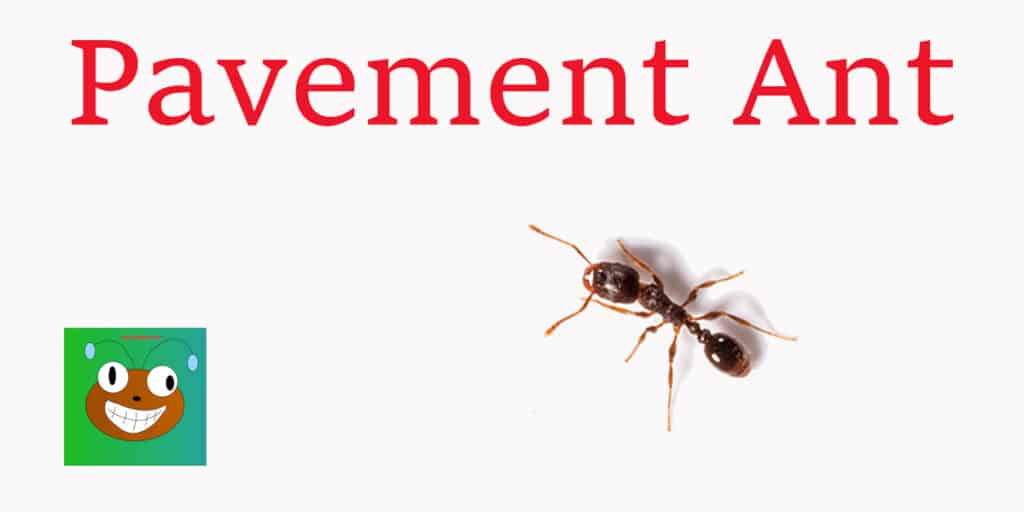
Pavement ants get their name because they typically make their nests under roadways, building foundations, and sidewalks.
Therefore, an area of disturbed soil near a paved surface is likely the result of pavement ant activity. Pavement ants may build their nests inside buildings near a heat source, mainly during winter.
These trailing ants consume many items, including honeydew from aphids, oily foods, seeds, and dead insects. Pavement ant colonies include up to 4,000 workers comprising several queens.
The queens are much bigger than the workers, going upwards of 9 mm in length.
The drones and young queens searching for partners are frequently spotted on nuptial flights during the end of spring and the start of summer. Drones and queens that reproduce have wings.
Pharaoh Ant
Another smaller and at about 2.4 mm (1/16 Inches), and interestingly the males and worker ants are actually the same size (not the Queen).
This ant can quickly become a nightmare if it infests your home, as it can survive even the most advanced household pest control attempts.

These ants will eat everything and are well known for infesting hospitals and other large corporate buildings that offer a cafeteria.
Because these ants don’t need soil or other substrates to create nests, they can infiltrate a building and start building out a home anywhere.
These ants do not care where they put their nest and have been seen nesting in everything from electrical wiring to underground sewage systems.
A unique (and sad) fact about Pharaoh Ants is that they have been caught feeding on the flesh of burn victims and are known for transferring diseases within hospitals.
Small Honey Ant
The little honey ant, often known as the fake honey ant, is a unique ant species. In some parts of the world, they are also called winter ants.
Workers of little honey ants are monomorphic, with their bodies being sleek and ranging from dark brown to black. Workers vary in length from 0.08 to 0.16 inches.
The Queens size is much bigger than the workers, measuring 0.28 inches.
Twelve-segmented antennas without a crossbar are used. Its petiole, the only piece of the thoracic pedicel, is highly present in this species.
The distinct mesonotum contraction separating the thin thorax into two segments makes this ant easy to identify.
These ants try to build nests indoors but many times end up making their homes outside.
The nests are typically found in the ground at slab joints, and houseplants are used to harvest whole communities.
Honey ants are tiny, tenacious, and forage along pathways.
Cakes, loaves, fruits, meats, nectar, honey, glucose, and other common household goods are just a few of the things they infect and thrive on (carbohydrates).
